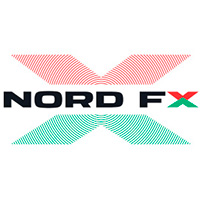Tickmill Group once again surpasses previous financial records, posting growth in key financial metrics. The unaudited consolidated net profit for the first 9 months of 2019 came in at $29.46 million and the Company is projecting to reach $35 million net profit for the calendar year, in comparison to 2018’s consolidated net profit, at $19.67 million. Tickmill Group attributes its strong profitability figures to organic growth in key markets, cost optimization and investment into new technology, achieving increased efficiency through automation.
Moving on to our trading volume, Tickmill reached up $1.09 trillion in the first 9 months of 2019, up 13.1% on last year’s result of $967 billion in the same period. These results are even more noteworthy when you consider the low volatility felt throughout the FX market over the course of 2019. Despite this low volatility, Tickmill projects reaching $1.45 – $1.50 trillion in 2019, surpassing the $1.37 trillion from 2018.
Execution numbers, with the average number of trades executed on a monthly basis, reached 6.74 million trades (Jan to Sep 2019), making a 9.9% (YoY) increase from last year’s average of 6.13 million over the same period in 2018.
As the Tickmill continues its growth, the group have started looking at various acquisition opportunities in the technology front. With aims to partially deploy Tickmill’s extensive capital base and increase shareholder value, the group is currently assessing opportunities to expand our offering by introducing new products and platforms over the coming months.
In Q3, Tickmill Group also increased Tickmill UK Ltd’s share capital to $8.33 million by injecting an additional $4.32 million. Despite the fact that Tickmill UK Ltd doesn’t expect any negative material effects from Brexit, they raised the total net capital base to $15.90 million. The consolidated net capital base to $66.43 million (as of September 30, 2019) compared to $40.71 million at the end of 2018.
Tickmill aims to continually build upon the robust results that it achieves each year by investing in product and service development.
 The firm grants access to over 450 trading instruments across six major asset classes, including forex, commodities, metals, indices, shares, and futures, catering to diverse trading preferences.
The firm grants access to over 450 trading instruments across six major asset classes, including forex, commodities, metals, indices, shares, and futures, catering to diverse trading preferences. Trump has declared that the United States could become the global capital of the crypto industry. To achieve this, he proposes reducing regulatory pressures.
Trump has declared that the United States could become the global capital of the crypto industry. To achieve this, he proposes reducing regulatory pressures. Forex trading is a captivating endeavor, promising both active and passive income streams. Yet, mastering forex is a continuous journey that transcends expertise levels, be it a novice or a seasoned trader...
Forex trading is a captivating endeavor, promising both active and passive income streams. Yet, mastering forex is a continuous journey that transcends expertise levels, be it a novice or a seasoned trader... In a resounding victory, NordFX, a prominent brokerage firm, has been crowned the "Best News & Analysis Provider" of 2023...
In a resounding victory, NordFX, a prominent brokerage firm, has been crowned the "Best News & Analysis Provider" of 2023... Errante, the premier online broker, is dedicated to delivering top-tier services and forging long-lasting, trust-based relationships with our clients. Our mission is to enhance your online trading journey...
Errante, the premier online broker, is dedicated to delivering top-tier services and forging long-lasting, trust-based relationships with our clients. Our mission is to enhance your online trading journey...